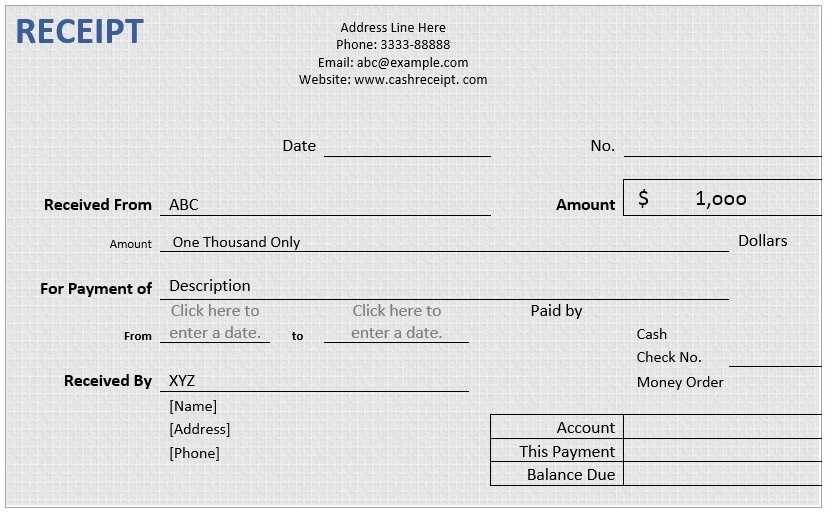Key Elements of a Receipt
A well-designed clothing store receipt includes several key elements that ensure clarity and professionalism. Here’s what you need to include:
- Store Information: The name, address, phone number, and email of the store should be clearly listed at the top.
- Date and Time: The receipt should show the exact date and time of the transaction.
- Receipt Number: Assign a unique receipt number for reference.
- Itemized List of Products: Display each product’s name, quantity, price, and any applicable discounts.
- Subtotal: Show the total cost before taxes and discounts.
- Taxes: List any applicable taxes or fees based on local laws.
- Total Amount: Clearly indicate the final amount the customer is paying.
- Payment Method: Specify whether the customer paid by cash, credit card, or another method.
Tips for Creating an Effective Template
Simple Layout
A clean and organized layout is key to a professional receipt. Use clear sections with appropriate spacing. This makes it easier for the customer to review their purchase.
Use of Logos and Branding
Include your store’s logo at the top to enhance brand recognition. This is an easy way to make the receipt feel personal and official.
Provide Return and Exchange Information
At the bottom of the receipt, include store policies regarding returns or exchanges. This can help prevent future misunderstandings.
Digital Receipts
Offer customers the option of receiving a digital receipt via email or text message. This reduces paper waste and makes it easier for customers to keep track of their purchases.
Clothing Store Receipt Template
Choosing the Right Format for Your Receipt
Key Information to Include in a Store Receipt
Designing a Clear Layout for Readability
How to Incorporate Taxes and Discounts
Customizing Receipts for Brand Identity
Ensuring Compliance with Local Regulations
Keep your receipt format simple yet informative. A clean design helps both your team and customers easily interpret transaction details. Ensure that each receipt clearly lists essential components such as the store name, address, and contact information, along with the itemized list of products, prices, taxes, and discounts. A footer section showing total cost and payment methods should be easily visible. The format should suit your store’s specific needs while maintaining clarity and readability.
Key Information to Include in a Store Receipt
Each receipt must contain the store’s name and contact information, including phone number and address. Display the date and time of the transaction for reference. List each purchased item with a description, quantity, and individual price. Include the subtotal before taxes and any discounts applied, followed by a breakdown of applicable taxes. The total price should be clear, along with the payment method used–whether cash, card, or another option.
Designing a Clear Layout for Readability
Ensure a logical flow from the store’s details at the top to the payment section at the bottom. Use different font sizes for section titles and totals to make key information stand out. Organize item descriptions, prices, and taxes into neat columns to help customers quickly locate each detail. Keep spacing between sections wide enough for easy reading without overcrowding.
When designing, make sure your layout is compatible with your printing method, whether you use thermal printers or regular inkjet printers. Always test the print quality before finalizing your template to guarantee legibility on paper receipts.
By tailoring your store receipts to both functionality and style, you enhance your customer experience while ensuring accurate records for both customers and your store. Keep local legal requirements in mind to stay compliant and provide all necessary details for returns, exchanges, or warranty claims.


